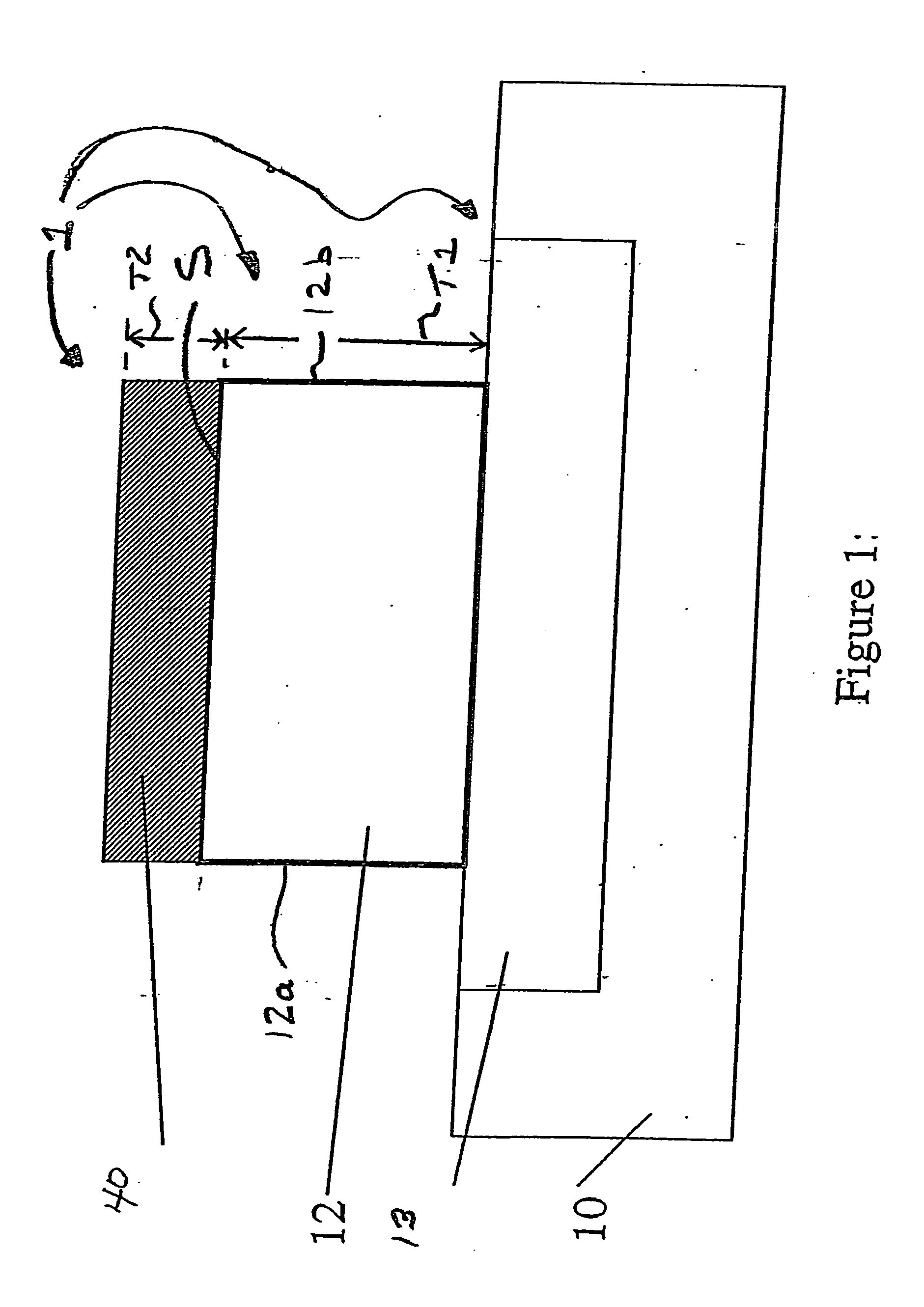Programmable Semiconductor Device
- Summary
- Abstract
- Description
- Claims
- Application Information
AI Technical Summary
Benefits of technology
Problems solved by technology
Method used
Image
Examples
Embodiment Construction
[0020]FIG. 1 shows a preferred programmable (un-programmed) semiconductor device (1) (e.g. fuse) in cross section. The fuse (1) includes an elongated semiconductor material (12) having a metallic material (40) disposed on an upper surface S. The material (12) is disposed on / over an isolation region (13) in a silicon substrate (10). Preferably, the unprogrammed fuse includes N+ polysilicon (90 nm height / thickness T1) (12) and WSi2 (55 nm height / thickness T2) (40). The region (13) is, for example, filled with an insulator such as an oxide. The region (13) is, for example, a known shallow trench isolation (STI) region. The device (1) includes a first end (12a), a second end (12b) and a central portion or link (12c) connecting the first end (12a) to the second end (12b). Preferably, the link (12c) and the second end (12b), together, form a “T”-shaped member (FIG. 2, and FIGS. 11a, 11b).
[0021] According to an important feature of the present invention, the resistivity of the metallic ma...
PUM
 Login to View More
Login to View More Abstract
Description
Claims
Application Information
 Login to View More
Login to View More - R&D
- Intellectual Property
- Life Sciences
- Materials
- Tech Scout
- Unparalleled Data Quality
- Higher Quality Content
- 60% Fewer Hallucinations
Browse by: Latest US Patents, China's latest patents, Technical Efficacy Thesaurus, Application Domain, Technology Topic, Popular Technical Reports.
© 2025 PatSnap. All rights reserved.Legal|Privacy policy|Modern Slavery Act Transparency Statement|Sitemap|About US| Contact US: help@patsnap.com



